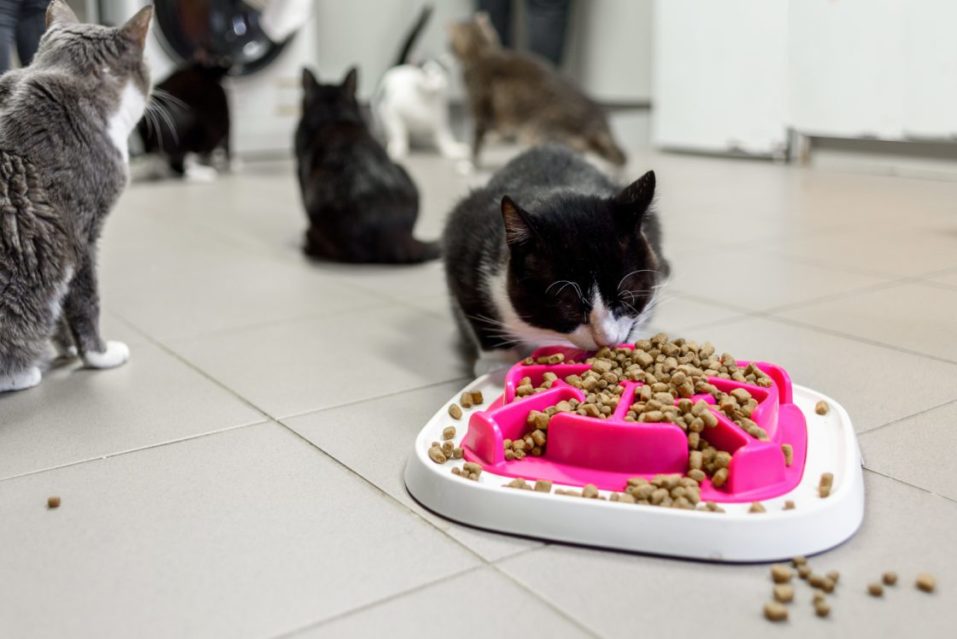Pets have their own personalities; they can be just as stubborn and wilful as their human counterparts. A lot of pet owners are often surprised to discover that their pets can be picky eaters too. They have their own likes and dislikes, and sometimes trying to get them to eat something can feel like an uphill struggle. Dealing with a picky pet can be extremely frustrating, which is why we have put together the following guide, so read on to learn more.
How to Tell if Your Pet is Actually Picky
If your pet is refusing to eat something, it doesn’t always come down to them being picky; sometimes, there are other factors at play that you need to be aware of. For example, their unwillingness to eat something could actually be an allergy or an intolerance to the food itself. If this is the case, you are likely to see some accompanying symptoms like vomiting, itching or diarrhoea.
Allergies can’t be cured, and it would instead make far more sense to stop feeding your dog the allergen and look into other options like the ones provided by Native Pet, which have a number of hypoallergenic or allergy-friendly options. They also have a number of resources which detail all manner of pet care, from Native Pet’s guide on kid-friendly breeds to hypoallergenic dog breeds.
How to Get Them to Eat

After you have ascertained whether or not your pet actually has an allergy or an intolerance to the food, you can then take steps to work on their picky eating habits. You should start by thinking more about their diet. Each type of pet will excel on a different form of diet, so do your research. For example, dogs and cats can be fed on either kibble or wet food. Whereas birds, rabbits, gerbils or guinea pigs will each need a specific mix that you can get from a pet shop.
You then need to come up with a feeding schedule, whether that is once or twice a day, et cetera. Remember that if your pet is hungry enough, they will eat. Put their food out and leave them to it. If your pet hasn’t touched their food after half an hour, then take their food up. You should not give them anything else during this time because your pet could see this as a reward, therefore, reinforcing their picky habits. Put their food back down after an hour or so and repeat the process.
If twenty-four hours have passed and your pet hasn’t eaten anything, you might want to compromise a little and give them something that they like. Luckily, this is often rare most pets will have given in long before you reach this milestone. During your efforts, you should also do your best to limit distractions to your pets so as not to disturb them or put them off their food.
Pets can pick up on their owner’s body language and mood changes. If they see you hanging around, anxiously waiting to see if they’ve eaten, they are much more likely to feel anxious themselves and therefore not eat the food that you have put down. Let them eat in private, put their food out and leave the room. You should only return after the allotted time or half an hour or so to see if they have eaten anything. Feed your pets first; if you get busy cooking or preparing your own food, then they might become distracted by the sights and smells of food that you don’t intend to share.
How Do I Make Their Food More Appealing to Them?
If you have taken on board the above tips without much success, you might want to consider how you can make your pet’s food more appetizing or appealing to them. This does not necessarily mean that you need to start thinking about ways to subsidize their food with the snacks and treats that you know they prefer. Instead, start by giving them more of a workout before mealtimes so they can work up more hunger.
You might also want to try adding in some low-calorie fruits or veggies – as long as they are safe for your pet – because this is a great way to provide their meals with more texture and flavour. If your pet is on a diet of kibble or dry food, then you could also think about adding a broth to it; make sure to check the nutritional value of the broth, though, because some of them can have high salt and fat content which can prove bad for your pet’s health.
In Conclusion Trying to deal with a picky pet can be incredibly stressful; there are no two ways about it. Luckily, the above tips can help to provide you with a plan of action to follow in order to break your pet of these habits. The best thing that you can do is to stand firm and refuse to give in. Remember, at the end of the day, it is simply a batt




